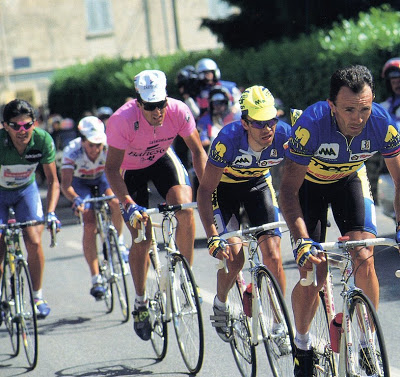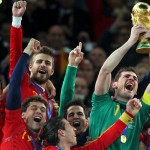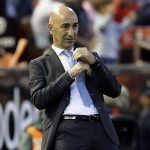The greatest show pure ostracism: 20 years of deterioration of cycling

Last update 17 October, 2013 por Julio Muñoz
En 1993, Miguel Indurain won his third consecutive Tour de France. I did spectacularly after winning a Tony Rominger who had put him things difficult, especially in giant Tourmalet. The Navarrese achieved the second consecutive Giro-Tour double after he returned to get his second pink jersey in June after enduring the dresses of a Latvian surnamed Ugrumov with little appearance of a cyclist, and less of the good ones, but he was doing really well against the clock and better up.
Ese mismo año, Villaba's tennis player conquered second place in the World Cup in Oslo after a certain Lance Armstrong and in the Spanish Championship also in the road discipline he repeated the same metal medal again. The Tour of the Mining Valleys saw him conquer two stages and see how he staggered in one of his rare haystacks. Nothing worrisome for a cyclist who imposed his class in the Clásica de los Puertos and the Vuelta a Murcia also where he conquered a partial stage.
It was the year of Euskaltel's birth, of the white jersey of that ill-fated promise called Juan Antonio Martín, of the presence of up to four Spanish teams on the Tour (Amaya Insurance, Once, Banesta, Clas-Cajastur) and an Andorran with a large Spanish presence (Festina-Lotus) plus those present Kelme-Xacobeo 93, Artiach and Deportpublic in the Vuelta.
Good times, where the Giro was televised by Telecinco that “I was looking for Jack” with a young J.J Santos in charge (who then did not speak of Messi or Ronaldo but of the exploits of Moreno Argentin and company) and where the Vuelta and the Tour were things of a certain Pedro González with Carlos de Andrés on the motorcycle, still without his other Pedro, Delgado, who at the time was rushing his career on the road, worth the pun. although perhaps, beyond everything discussed, good health was indicated by the cycling calendar and its impact on the media, especially in the press where it was on many covers and on the radio where the end of stage specials followed one another for hours with the great communicators of the moment who sent special teams.
The Challenge of Mallorca kicked off a season full of career in Spain, where many cyclists hardly had to leave the Iberian Peninsula to get ready. The Tour of Andalusia at the end of February, the Tour of the Valencian Community at the beginning of March next to that of Murcia, they were the first tests for the main outsiders of a platoon that could also compete in the Vuelta a Castilla y León, the Tour of Aragon, the Catalan Week, the Tour of the Mining Valleys, the Classic of Alcobendas or Sabiñanigo, the Tour of Asturias, the Tour of Catalonia, the Tour of the Basque Country, the Basque Bicycle, the Llodio Grand Prix, the Ascent to Urkiola, the Climbing to Montjuic and of course, The return to Spain, still disputed in the month of April.
Always with the cameras of La 2 and sometimes even from 1, faithful to some tests that enjoyed popular fervor despite a violent crisis that gave its first tail but did not fatten with cycling, aware of its commercial potential. Brand, AS and the sports and general newspapers covered their covers with the feats of Induraín leaving football in the background.
Were good times, perhaps unforgettable if we compare with this 2013 that is saying goodbye and that leaves us with a sad reality: next will be a season with a single elite spanish team, Movistar and with just three top-level races on our borders: the Tour of Catalonia, the Tour of the Basque Country and the Classical of San Sebastián, that of course, it was also celebrated then. Public television will broadcast the Tour and the Tour (who knows if with parakeet), but nobody will know about the future of the Giro and many other races like the World Cup, despite the fact that miraculously in all of them we have candidates for victory.
It is the crisis, are the effects of a situation that threatens to devour a sector that in Spain has given many joys and not as many sadnesses as many can imagine, perhaps the least understood. There is a remedy, but little time, and worse, little money. Quizás, the Angliru, Los Lagos or Navacerrada in a few years they have to give way to artificial ports built in the middle of the desert where cyclists will not make their way through anyone. Among other things, because the fans are still in Europe and in Spain, despite the fact that many still ignore it.
Statistical summary:
Seven Spanish teams ran great laps in 1993. En 2014, only one will do so far, the Movistar.
En 1993 había 14 multi-day races in Spain. En 2014, there will only be three of the highest level (Return to Catalonia, Tour of the Basque Country and Tour of Spain)








